Abstract
During the past decade, a variety of instrument-assisted bacterial identification and antimicrobial susceptibility test systems have been developed which permit provision of test results in a matter of hours rather than days, as has been the case with traditional overnight procedures. These newer rapid techniques are much more expensive than older methods. It has been presumed but not proven that the clinical benefits of rapid testing to patients with infection offset the added cost. The intent of this study was to objectively define the clinical impact of rapid bacterial identification and antimicrobial susceptibility testing. A 1-year study was performed in which infected, hospitalized patients in a tertiary-care, teaching, medical center were randomly assigned to one of two groups: patients for whom identification and susceptibility testing was performed by using a semi-automated, rapid, same-day procedure and those for whom testing was accomplished by using traditional overnight techniques. The two groups were compared with respect to numerous demographic descriptors, and then patients were monitored prospectively through the end of their hospitalization with the aim of determining whether there existed objectively defineable differences in management and outcome between the two groups. The mean lengths of time to provision of susceptibility and identification test results in the rapid test group were 11.3 and 9.6 h, respectively. In the overnight test group, these values were 19.6 and 25.9 h, respectively (P < 0.0005). There were 273 evaluable patients in the first group and 300 in the second group. Other than the length of time required to provide susceptibility and identification test results, no significant differences were noted between the two groups with respect to > 100 demographic descriptors. With regard to measures of outcome, the mean lengths of hospitalization were also the same in both groups. Mortality rates were however, lower in the rapid test group (i.e., 8.8% versus 15.3%). Similarly, statistically significantly fewer laboratory studies, imaging procedures, days of intubation, and days in an intensive or intermediate-care area were observed with patients in the rapid test group. Rapid testing was also associated with significantly shortened lengths of elapsed time prior to alterations in antimicrobial therapy. Lastly, patient costs for hospitalization were significantly lower in the rapid test group. The results of this study indicate the rapid same-day bacterial identification and susceptibility testing in the microbiology laboratory can have a major impact on the care and outcome of hospitalized patients with infection.
Full text
PDF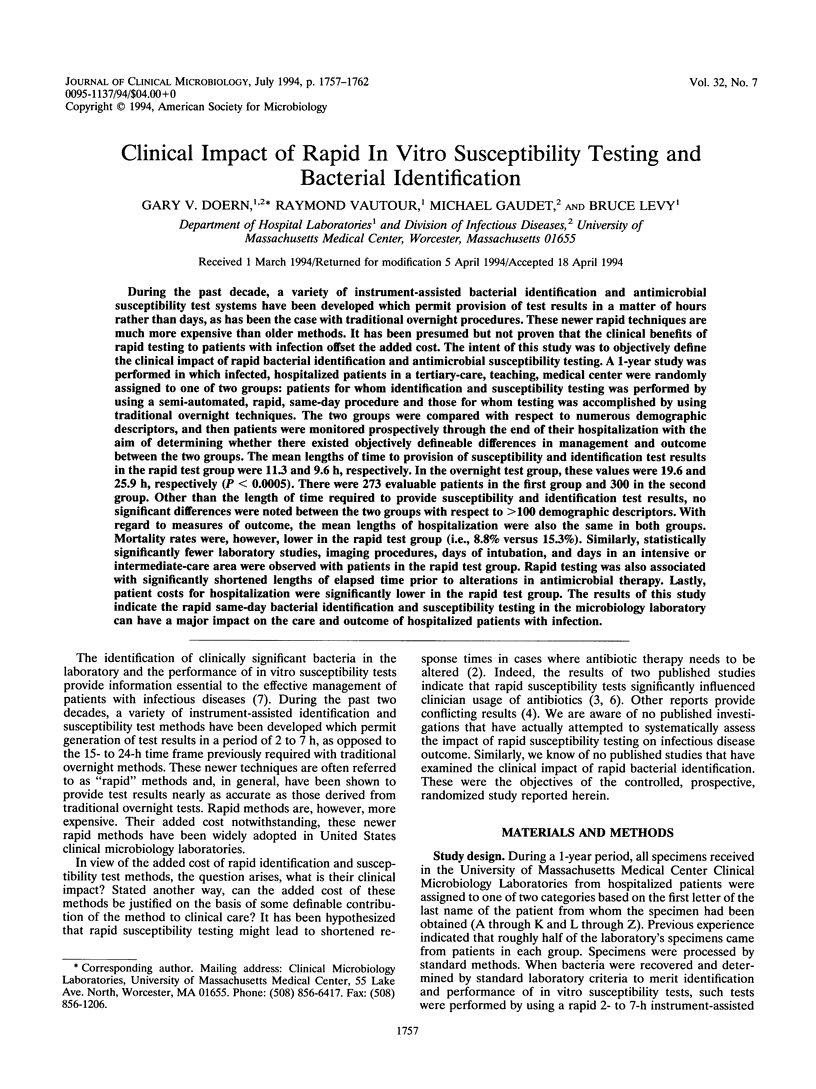
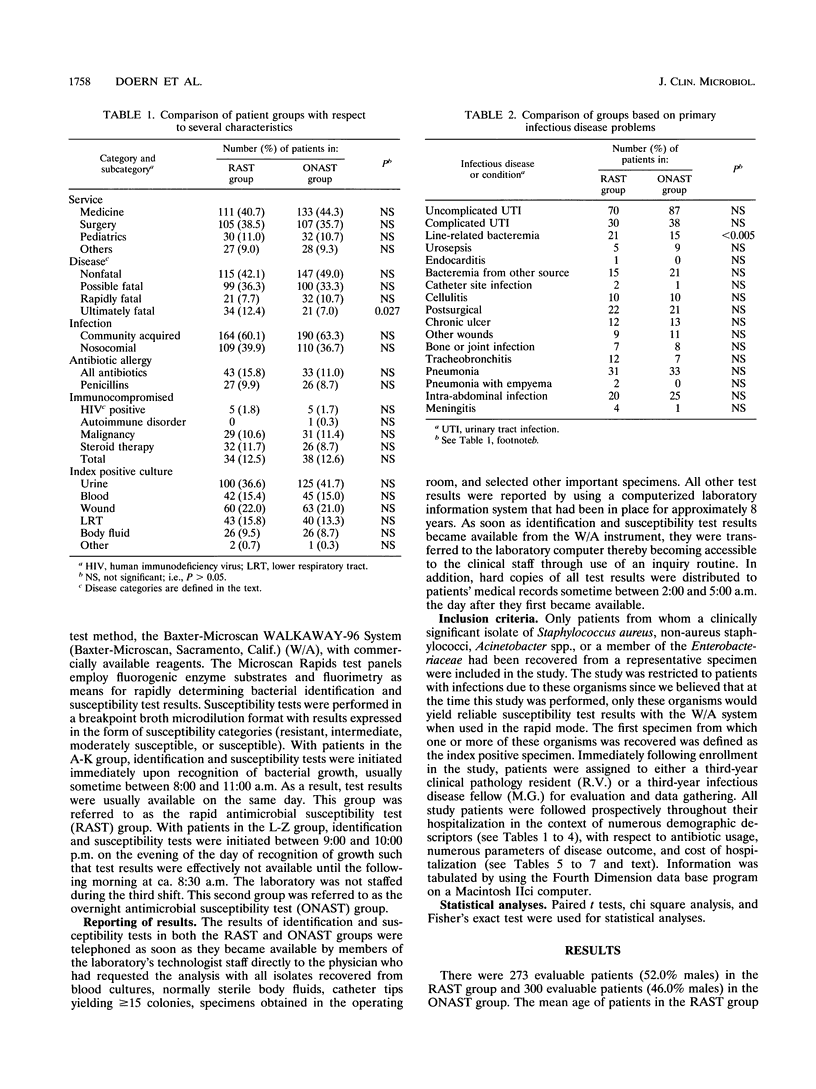
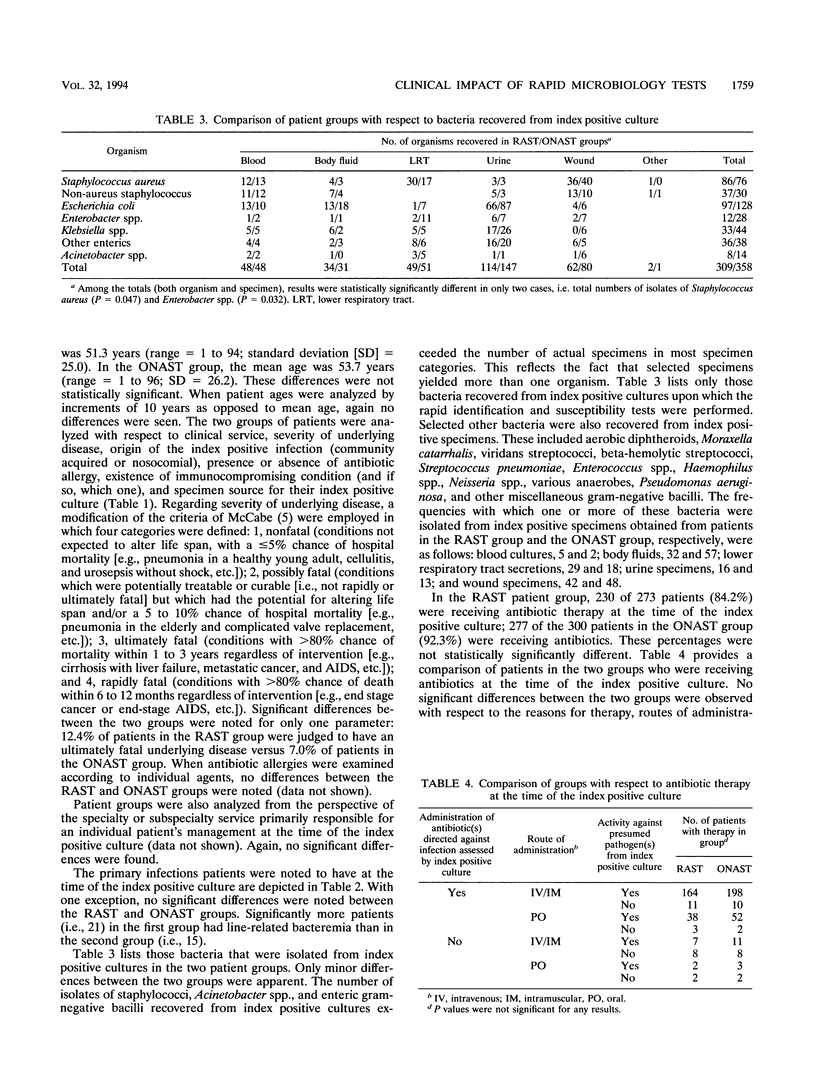
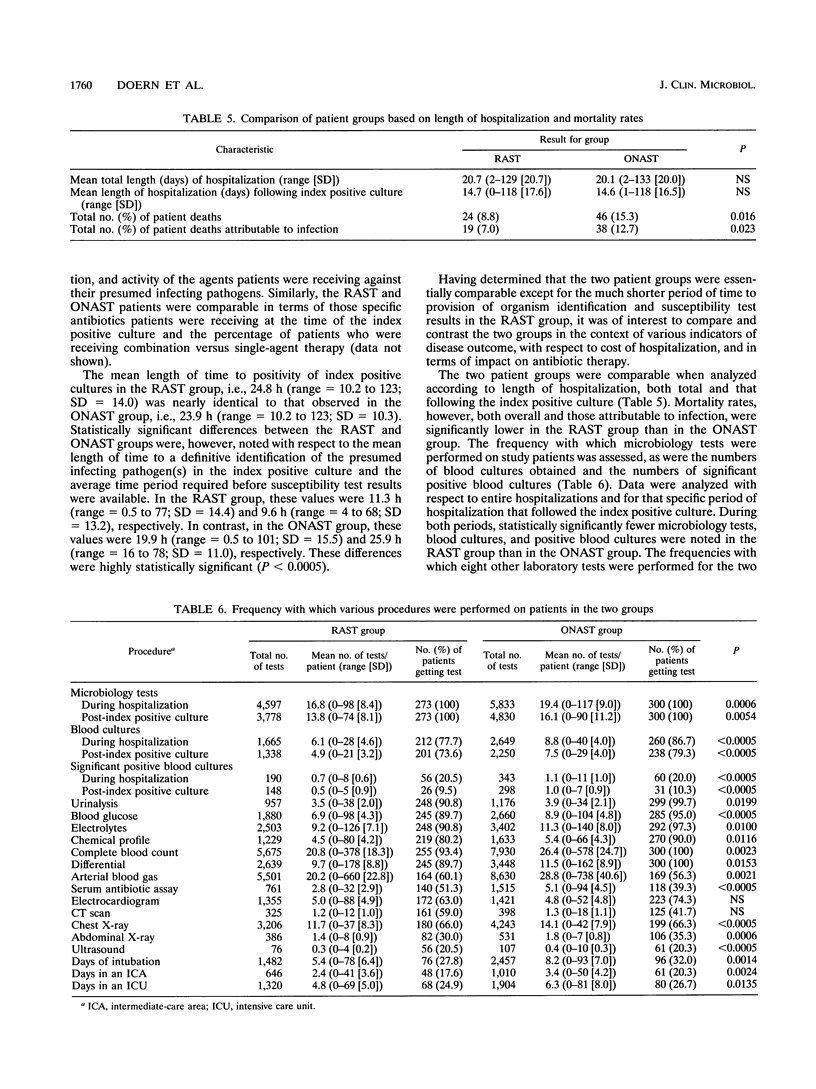
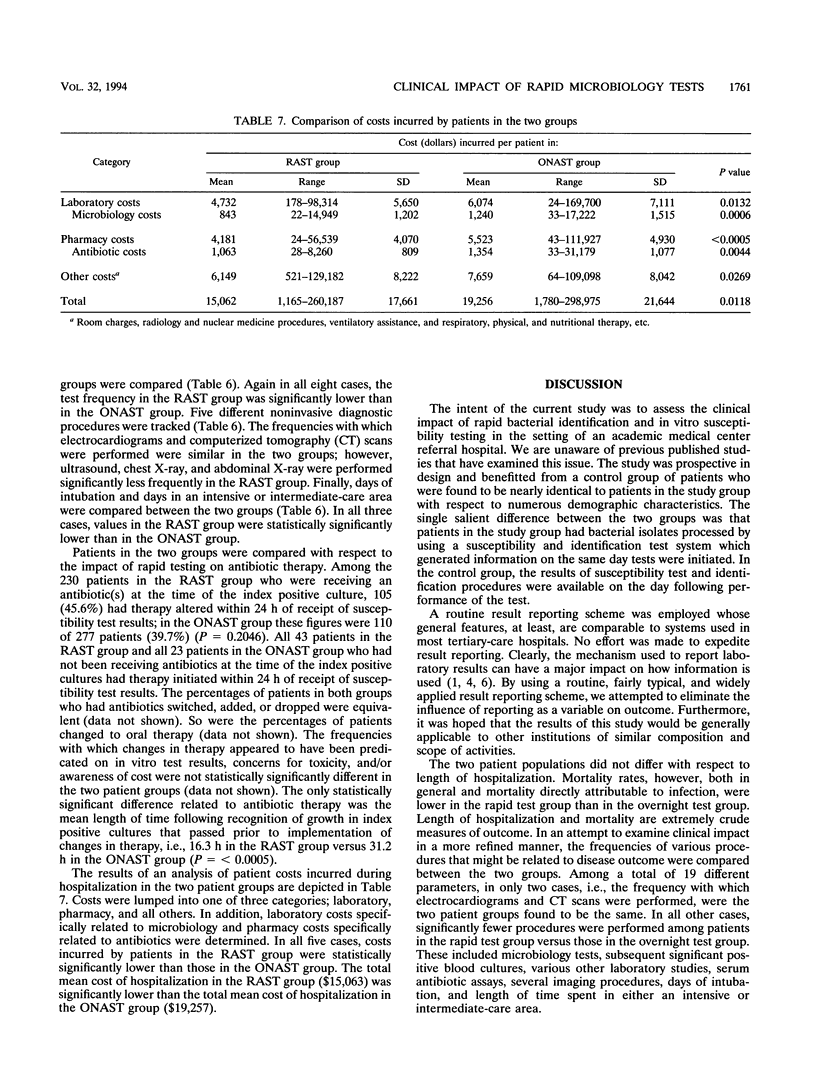
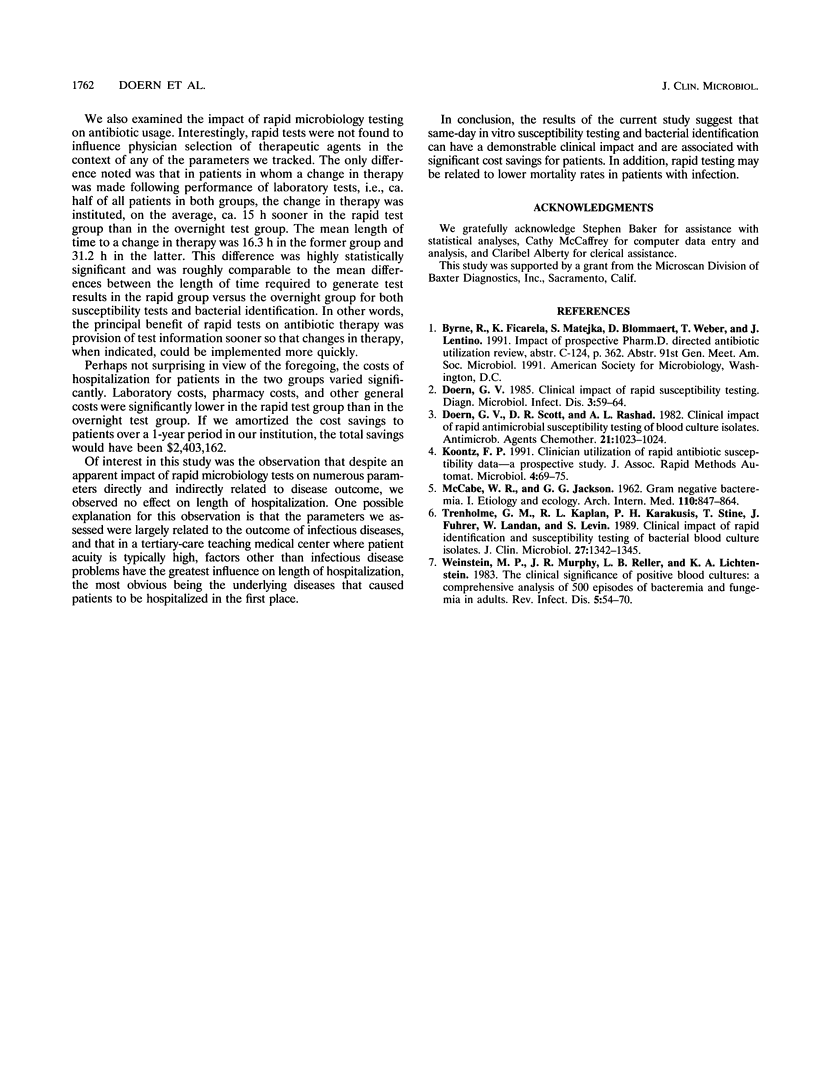
Selected References
These references are in PubMed. This may not be the complete list of references from this article.
- Burdash N. M., Welborn A. L., Teti G., Bannister E. R., Manos J. P. Identification of gram-negative bacilli using the Autobac IDX. Diagn Microbiol Infect Dis. 1985 Jan;3(1):59–64. doi: 10.1016/0732-8893(85)90067-7. [DOI] [PubMed] [Google Scholar]
- Doern G. V., Scott D. R., Rashad A. L. Clinical impact of rapid antimicrobial susceptibility testing of blood culture isolates. Antimicrob Agents Chemother. 1982 Jun;21(6):1023–1024. doi: 10.1128/aac.21.6.1023. [DOI] [PMC free article] [PubMed] [Google Scholar]
- Trenholme G. M., Kaplan R. L., Karakusis P. H., Stine T., Fuhrer J., Landau W., Levin S. Clinical impact of rapid identification and susceptibility testing of bacterial blood culture isolates. J Clin Microbiol. 1989 Jun;27(6):1342–1345. doi: 10.1128/jcm.27.6.1342-1345.1989. [DOI] [PMC free article] [PubMed] [Google Scholar]
- Weinstein M. P., Murphy J. R., Reller L. B., Lichtenstein K. A. The clinical significance of positive blood cultures: a comprehensive analysis of 500 episodes of bacteremia and fungemia in adults. II. Clinical observations, with special reference to factors influencing prognosis. Rev Infect Dis. 1983 Jan-Feb;5(1):54–70. doi: 10.1093/clinids/5.1.54. [DOI] [PubMed] [Google Scholar]


